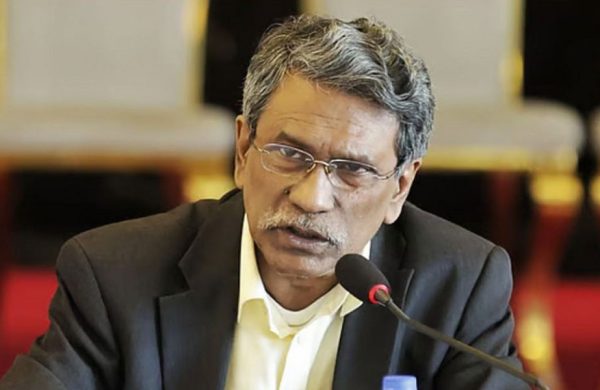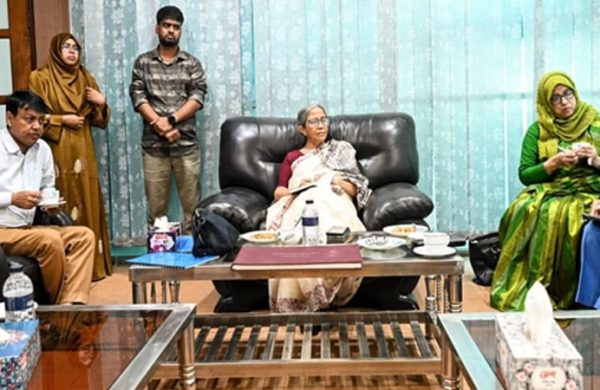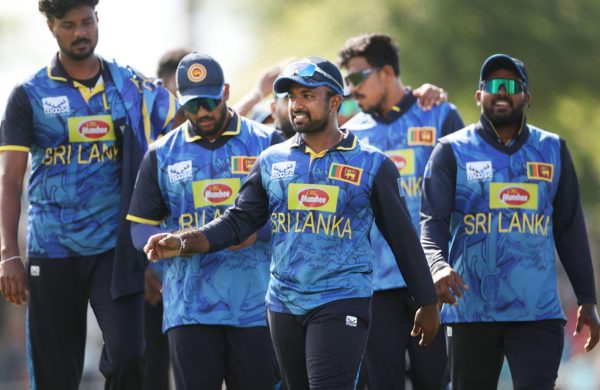Banknotes redesign likely without image of Sheikh Mujib
- Update Time : Saturday, October 5, 2024

The finance ministry has requested new designs for all denominations of banknotes, sparking speculation about the potential exclusion of Sheikh Mujibur Rahman’s images
TDS Desk:
Images of Sheikh Mujibur Rahman are likely to be removed from all types of banknotes in Bangladesh, according to several officials from the Bangladesh Bank and the Ministry of Finance.
The finance ministry has requested new designs for all denominations of banknotes, sparking speculation about the potential exclusion of Sheikh Mujib’s images.
In a letter dated 29 September, signed by Finance Division Deputy Secretary Elish Sharmin, the ministry requested that the Bangladesh Bank send specific design proposals for new banknotes.
The request specifically asked for recommendations of the Currency and Design Advisory Committee of the Bangladesh Bank, which is responsible for overseeing the introduction of new currency designs.
Over the past few days, several central bank and finance ministry officials, speaking on condition of anonymity, told TBS that if the government had intended to keep Sheikh Mujib’s image on the banknotes, there would have been no need to request new designs.
The letter stated, “It is requested to send a specific proposal to the Finance Division as soon as possible, taking the recommendations of the Currency and Design Advisory Committee of Bangladesh Bank on what type of design would be appropriate for the circulation of notes with new design and features.”
Currently, all paper notes in Bangladesh – ranging from Tk2 to Tk1,000 – feature images of Sheikh Mujibur Rahman. Some of the notes carry his image on both sides, while metallic coins also feature his portrait.
The introduction of new designs could mark a significant shift from the currency standards established under Sheikh Hasina’s government.
Before Hasina left office, the finance ministry had written to the Bangladesh Bank with instructions to make Mujib’s image more prominent on the Tk500 and Tk1,000 notes.
They also asked for changes to the printing process for Tk20 and Tk100 notes. However, after the fall of the Hasina government, the decision was suspended.
The central bank has now requested six months to prepare new designs for various banknotes.
According to officials in the Department of Treasury Management, four different designs for each banknote will be created in accordance with the guidelines of the Currency and Design Advisory Committee.
These designs will then be submitted to the finance ministry for approval. However, it will take an estimated 20 to 22 months for the new banknotes to be circulated in the market, said an official.
When asked by journalists whether Mujib’s image would remain on the notes, Bangladesh Bank Governor Ahsan H Mansur did not provide a direct answer.
Despite the uncertainty surrounding the future of the design, the central bank has already begun the process of gathering recommendations for the new banknotes.
During the previous government, the Bangladesh Bank had included Sheikh Mujib’s image in at least one of the four proposed designs for each note. Ultimately, then-prime minister Sheikh Hasina approved the designs featuring the image of Mujib.
The approval process for the new notes will follow a similar procedure. After creating the four design options, the Bangladesh Bank will submit the designs to the Currency and Design Advisory Committee, led by the deputy governor-1 of Bangladesh Bank.
The committee includes high-profile individuals and artists who will review and fine-tune the designs before their submission to the finance ministry.
The ministry will then review the designs and, following approval, the new plates for the banknotes will be produced by a foreign company, either through an international tender or a direct bilateral agreement.
Due to the technical and security complexities of plate-making, the entire process of introducing new notes into circulation is expected to take nearly two years.
The printing of the new notes will be managed by the Security Printing Corporation (Bangladesh) Limited, which currently has enough paper and high-value notes (Tk100, Tk200, Tk500, and Tk1000) to continue printing for about 13 more months.
This buffer will ensure that the current design notes remain in circulation while the new designs are finalised and prepared.
In a letter sent to Finance Secretary Khairuzzaman Majumder on 18 September, the Bangladesh Bank stated, “The implementation of the proposed changes to the approved Tk1,000, Tk500, Tk100, and Tk20 notes is at a preliminary stage. In the changed context [fall of the Hasina government], it is requested to provide your opinion on whether the ongoing activities in line with the said approval will continue.”
The Bangladesh Bank has clarified that it will continue the design work based on new government guidelines, which may include removing Sheikh Mujib’s images from the notes entirely.
If the new series of banknotes is approved, the Bangladesh Bank will ensure that the current stock of paper and high-value notes are gradually replaced with the newly designed notes over the next several years.
Historically, Sheikh Mujibur Rahman’s image has been a prominent feature on Bangladeshi currency. The first notes issued after independence in 1972 – Tk1, Tk5, Tk10, and Tk100 – all bore his portrait.
Over the years, different governments have made changes to currency designs, including the removal of his image under some administrations.
However, the Awami League government, led by Sheikh Hasina, reintroduced Sheikh Mujib’s portrait on Tk10 and Tk500 notes in 1996, and later on Tk1, Tk2, and Tk5 coins after returning to power in 2009.
In 2011, following government directives, the Bangladesh Bank printed Tk2, Tk5, Tk100, Tk500, and Tk1,000 notes containing Sheikh Mujibur Rahman’s images.














